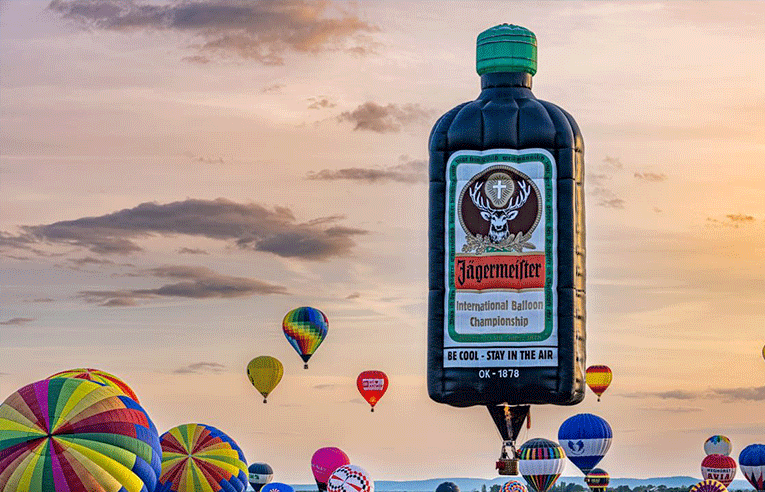in the year 2022 two guys in the Netherlands bought the balloon from the ex owner in Czech. Now its part of the ballooning company called Achterhoek Ballonvaarten, located in a small area in the Netherlands. Since this moment it has travelled to more countries to fly. Added to the list in the last two years. Israel, France, Germany and the Netherlands. Its back flying after alot of years in the bag.
The balloon was made by Kubicek in the year 2002. People say its one of the first racers in the world. I dont know why… but they say it. Its construction is quite unusual. It looks as if you’ve slipped a bottle over a regular balloon and let it fly. The height of this balloon is almost 30 meters and it weighs almost 200 kg. Its volume is 1,800 m³, which, if it were real Jägermeister, would take a long time to drink all of it.
At the top of the balloon is a special release vent, which has a circumference of 12 meters. This needs to be “sealed” with Velcro before flight. After landing, we peel it off again, allowing the air to escape.
In case of a need for rapid descent during flight, the balloon has another release vent located in the bung. In the photo, you see it as the red circle in the middle. That alone is never enough, hence we need this second release vent. The red vent is actually not even necessary. I almost never touched it. The air in the balloon cools quickly due to its atypical shape. Exaggerating a bit, it’s more of a problem to keep the balloon in the air. In this view, the ribs are also clearly visible (especially those with the holes), which help maintain the shape of the balloon and mainly create the impression of the edges of a bottle.
Each time I fire up the burner, I send more warm air into the balloon and the mouth of the balloon narrows a bit. Some air escapes, I don’t know where, and during the vacuum created while heating, the moving fabric makes a peculiar popping sound. Initially, I had to get used to these sounds. It’s quite thrilling. Otherwise, the balloon flies nicely and it’s a pretty fun ride.

